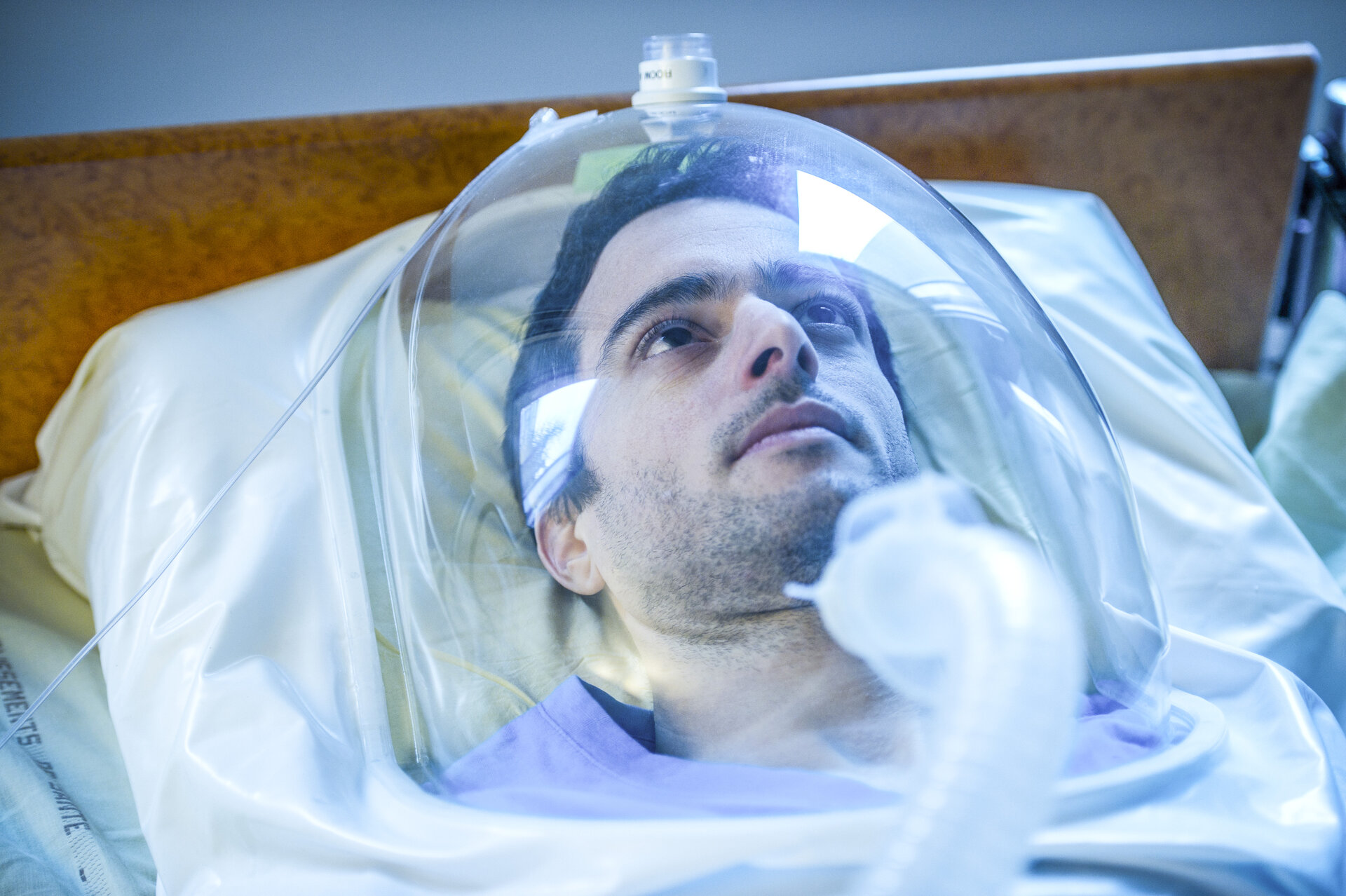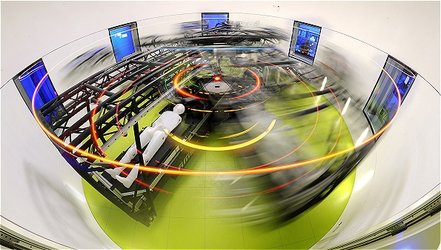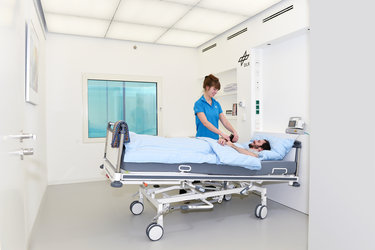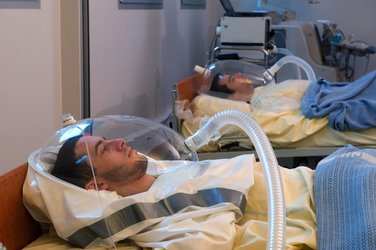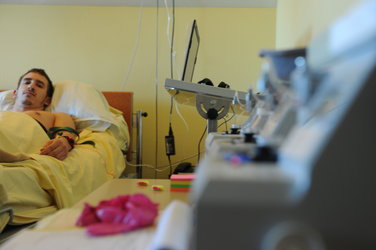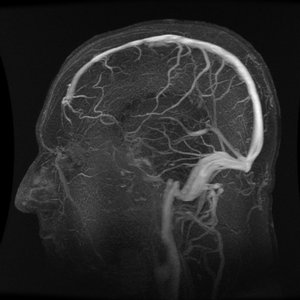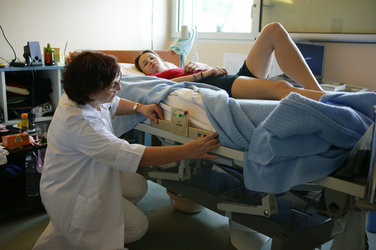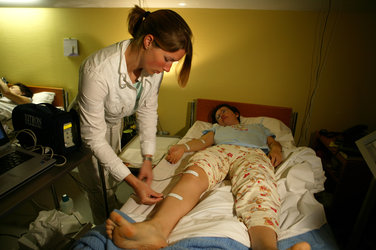Preparing in bed
Preparing for spaceflight is no easy task. Sending people into space is expensive and dangerous while the effects of living beyond the effects of gravity are not fully understood. Space agencies need to research the effects of living in space on the human body without the risk and expense of launching astronauts into space.
Bedrest studies offer scientists a way to see how the human body adapts to weightlessness. They allow researchers to test techniques to counteract the negative effects of living in space such as the wasting away of bones and muscles.
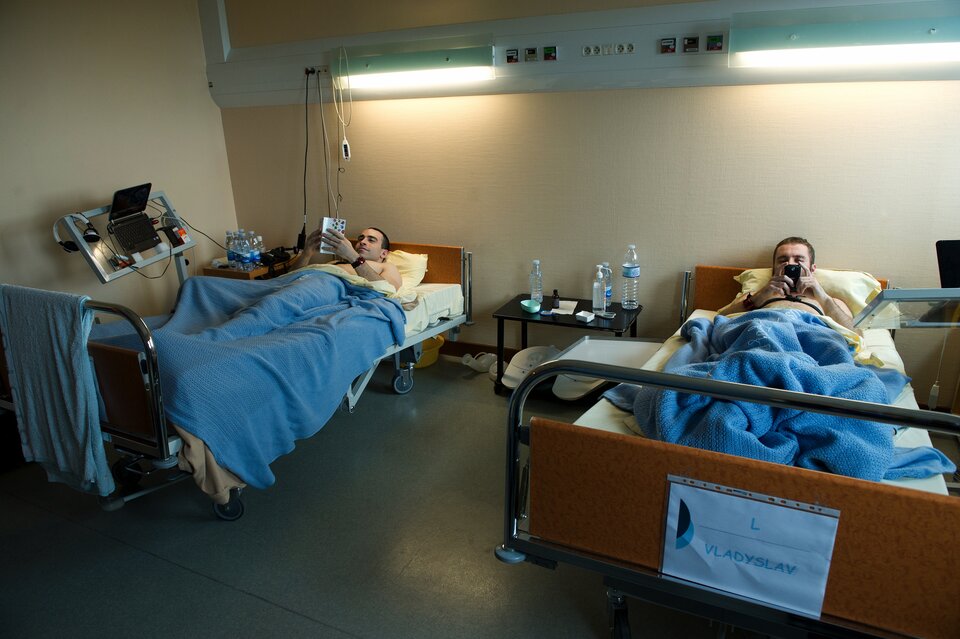
Astronauts in space undergo many physiological reactions when gravity no longer controls them. Look closely at pictures taken on the International Space Station and you will notice that astronauts have a larger, swollen, head than when they are on Earth, as if they were hanging upside-down.
A logical way to recreate this effect of living without gravity is to hang people upside-down. Luckily for the volunteers in bedrest studies, scientists found that lying down with the head end six degrees below horizontal works just as well.
Volunteers spend from five to 60 days in tilted beds. They may not stand up unless a research programme demands it and must perform all daily activities in bed including eating, showers and exercise – and, yes, going to the toilet.
By submitting themselves to this tilted regime, the volunteers’ bodies start to adapt as if they were in space.
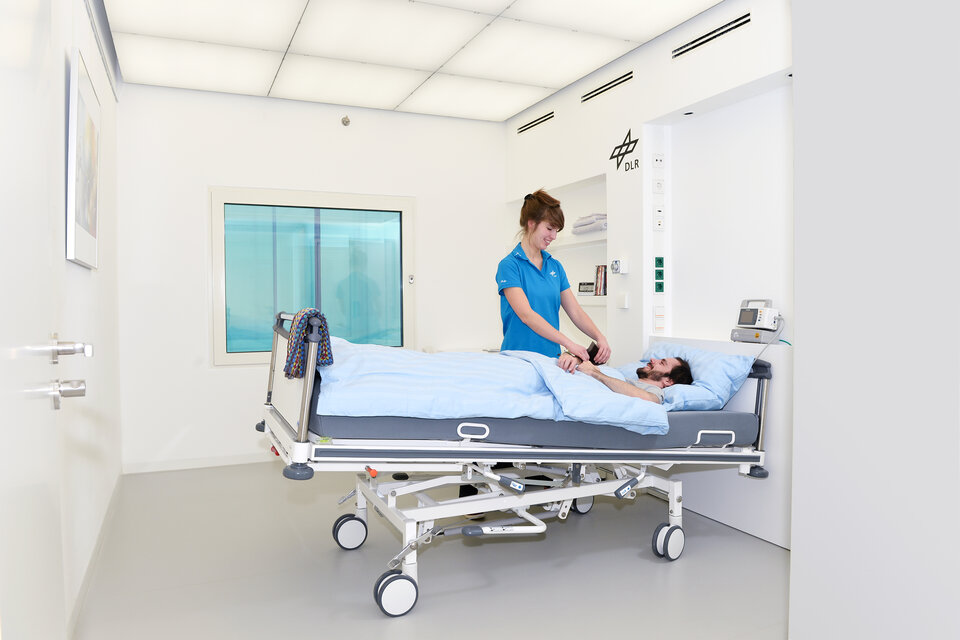
Scientists monitor the volunteers continuously to understand how their bodies change and why. Results allow measures to be devised that will help astronauts on space missions as well as bedridden people recuperating from illness.
The results benefit people on Earth – many negative effects of living in space are shared as people age, such as osteoporosis, muscle loss and orthostatic intolerance.
More on bedrest studies on the dedicated part of ESA’s website.


